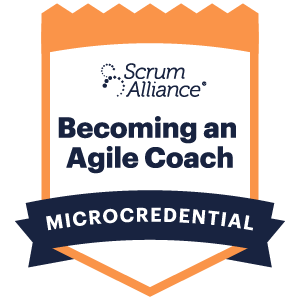
The most common complaint I hear from various Scrum team members is either, “There are too many meetings in Scrum!!” or “Is this another meeting to talk about other meetings?”.
We’ve all heard the complaint after a meeting, “That is one hour of my life I am never getting back”. Some team members I know have stopped attending about 50% of scrum meetings and their common reasons include: feeling that meetings are ineffective, that they don’t achieve the outcome, or that nothing is agreed upon.
Lack of knowledge about these "scrum meetings" known as scrum events in scrum, is one major factor that causes people to be disinterested in them.
You would be surprised by the number of people who do not understand the purpose of these meetings!
As a Scrum Master, I do the following to increase my team’s engagement in meetings:
Teach, Teach, Teach
As Scrum Masters, we have to wear the “Teacher” hat quite often. Conduct short workshops (bite-size portions) to teach people the purpose, timebox, input, and output of the various Scrum meetings.
For example, if I am teaching about Sprint Planning, I will explain the following:
- Purpose of the meeting
- Timebox – it’s the maximum time, not the recommended time!
- Who should be invited?
- What is every single person’s role in that meeting?
- What should they have prepared before coming to this meeting?
Prep Before the Meeting
Many meetings are inconclusive because attendees are not sure what they were supposed to prepare or who else should have been invited.
As a Scrum Master, I have learned that one of the key factors in facilitating an effective meeting is to PREP BEFORE the meeting.
For example, if I am preparing for a Sprint Review, I will conduct a meeting BEFORE the Sprint Review with:
- The Product Owner (PO) to check if he/she has accepted all the User Stories before they are demonstrated to the stakeholders and users during the Sprint Review.
- The Development Team (DT) to check if all the user stories that are candidates for the demonstration are loaded up and ready for display. This also includes conducting a trial run to check if everything is working as it should.
- Stakeholders/Clients – Sometimes I accompany the PO when meeting with the client to explain their role in the Sprint Review. I help them understand that this meeting is to provide feedback to the team on what is being demonstrated and not to intimidate the DT by asking questions like, “That’s it? Only 3 features were developed during the entire Sprint??” or, “Hey Mark, why didn’t you work on this feature, it would have been ready in 3 days” etc.
Having people know their role in each meeting helps the event run more efficiently.
Related Article: Scrum Roles Demystified
Put on Your Facilitator’s Hat
- Confirm that everyone who is essential will be attending that meeting will be attending.
- Avoid wasting time - Any links, printouts, post-its, etc. that will be needed during that meeting should be ready and shared with everyone. Nothing is more wasteful than having to wait in a meeting when people don’t have the conference link before you know it 15 mins are gone!
- Clearly Define the OAT (Outcome, Agenda, and Timebox) - Everyone involved should know the WHY and WHAT about the meeting.
- Everyone Has a Say – Periodically ask the team members (especially the quiet ones) for their opinion/thoughts etc. Once they feel that their ideas matter, conversations begin to flow. This is a very important factor to keep engagement high throughout the meeting.
- Stay Focused - Steer the group back on track in case they have started solutioning things instead of planning for them. This is one of the reasons people start losing interest!
- “Parking Lot” - Any topic that can derail us from the ongoing agenda, please park them.
- When we wear the “Facilitator” hat as Scrum Masters, one of our responsibilities is to make sure everyone is engaged during the meeting. I do the following to ensure this:
- Use simple and easy techniques like the Fist to Five, Dot Voting, or Thumbs Up/Down during the meeting. Include no multi-tasking in your working agreement. These simple tools and techniques keep everyone engaged and keep the conversation flowing.
Do a Retrospective on Your Meetings
Gather feedback to Inspect the various meetings that the team attended during the Sprint and Adapt in the following Sprint to improve them.
Ask questions such as, “What does everyone think of the frequency of our Backlog Refinement sessions?” or, “Does Daily Scrum at 11 am work for everyone?”. This shows the team that they are directly involved in decision-making and that these events are not enforced upon them.
The sheer act of asking for feedback makes people engage, it shows them that their opinion matters, or at least that the team members are open to listening to each other!
As Scrum teams begin to mature, these scrum meetings or events become shorter and shorter as everyone in those meetings KNOWS what the meetings are for and what preparation they need to get done beforehand. When people start seeing the value in these various meetings, the engagement increases and you will begin to see team members attending the meetings proactively.
Having your team engaged in Scrum Ceremonies is one of the many ways you can measure Scrum Team Success.

Bonsy Yelsangi is a Certified Scrum Trainer® (CST) and an agile coach with 17 years of experience. She has helped organizations and individuals attain agility in industries including media, remote managed services, luxury real estate, aviation, automotive and private wealth management. Throughout her career, she has served as a mentor, coach, facilitator, trainer, and change agent during agile transformations.
Bonsy’s speaking engagements focus on bridging the gap between doing agile and being agile. Her goal is to help others embrace change irrespective of their domain expertise.
Related Article
Unlock new possibilities as a Certified ScrumMaster
The Certified ScrumMaster course helps you gain the practical skills and mindset to guide teams toward success. Join a global community of professionals who make work more meaningful, one sprint at a time.











